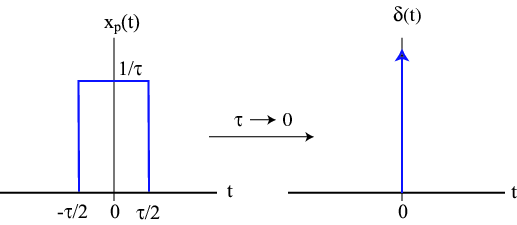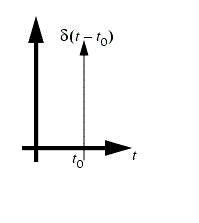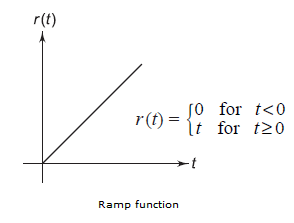A signal is function of independent variable that carry some information. Practically the input and also output signals of any system are complex (they are combination of other signal) in nature. Thus it is being tough to analyze the characteristic performance of any system by those signal. Thus we need some standard test signal to convert any signal into standard form and make the system study easy.
Here are some standard signals below,
STEP FUNCTION: The mathematical representation of step function is, 
[tex]\begin{array}{l} v(t) = 0;t \le 0\\ v(t) = K;t > 0 \end{array}[/tex]
A unit step function, denoted by U(t),is defined as
[tex]\begin{array}{l}
U(t) = 0;t \le 0\\
U(t) = 1;t > 0
\end{array}[/tex]
KU(t) is a step of magnitude K.
A shifted or delayed step function can be written as,
[tex]\begin{array}{l}
U(t - {t_0}) = 0;t \le {t_0}\\
= 1;t > {t_0}
\end{array}[/tex]
IMPULSE FUNCTION:

Consider a pulse function,as shown in figure. The area of the pulse= [tex]\left| {\frac{\tau }{2} - ( - \frac{\tau }{2})} \right| \times \frac{1}{\tau } = \tau \times \frac{1}{\tau } = 1[/tex]
This function is compressed along the time axis and stretched along the y-axis keeping the area unity. This is known as unit impulse function and it is denoted as [tex]\delta (t)[/tex]. The impulse function can be described mathematically as,
[tex]\delta (t) = 0;t \ne 0[/tex]
and [tex]\int\limits_{ - \infty }^\infty {\delta (t)dt = 1} [/tex]
A shifted or delayed impulse can be written as,
[tex]\delta (t - {t_0}) = 0;t \ne {t_0}[/tex]

RAMP FUNCTION:
A ramp function is as shown in the figure. It starts at t=0 and increases linearly with time, t.

- Relationship between step,impulse and ramp function:
Mathematically it can be proven that there is relation between impulse to step, step to ramp and hence ramp to impulse function.
Impulse to step function: The integral of the impulse function [tex]\delta (t)[/tex] gives,
[tex]\int\limits_{ - \infty }^t {\delta (t)dt = \left\{ \begin{array}{l}
1,t > 0\\
0,t < 0
\end{array} \right\}} = U(t)[/tex]
therefore, the integral of impulse function is called step function.
Step to ramp: A unit ramp function [tex]r(t)[/tex] can be obtained by integrating the unit step function once,
[tex]r(t) = \int\limits_{ - \infty }^t {u(\alpha )d\alpha = } \left\{ \begin{array}{l}
0,t < 0\\
t,t > 0
\end{array} \right\}[/tex]
- 4762 views










